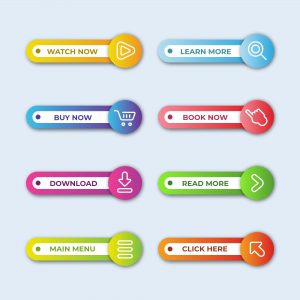
In today’s digital age, having a visually appealing and user-friendly website is crucial for small businesses. However, an aesthetically pleasing website alone is not enough to drive conversions and achieve business goals. To truly engage your audience and prompt them to take action, you need to master the art of crafting compelling calls-to-action (CTAs). In this comprehensive article, we will explore the key elements of effective CTAs and provide practical tips, backed by relevant data and insights, to help you create powerful CTAs that drive results.
Understanding the Purpose of a CTA
A call-to-action is a clear and concise directive that encourages visitors to take a specific action on your website. According to a study conducted by HubSpot, websites with well-placed CTAs can experience a 27% increase in click-through rates and a 2.5x increase in conversion rates [^1]. It’s essential to understand the purpose behind each CTA and align it with your business objectives.
Keep it Clear and Concise
The effectiveness of a CTA lies in its clarity. According to research by Nielsen Norman Group, users typically skim web pages, and clear, concise CTAs catch their attention more effectively [^2]. Avoid using vague or ambiguous language that may confuse or mislead your visitors. Instead, use concise and action-oriented phrases that clearly convey what you want them to do.
Use Action Verbs
Action verbs add a sense of urgency and motivation to your CTAs. Research conducted by WordStream indicates that using action verbs in CTAs can increase click-through rates by 90% [^3]. Incorporate powerful action verbs like “Join,” “Discover,” “Explore,” “Buy,” or “Subscribe” to encourage engagement and conversion.
Create a Sense of Urgency
A great way to prompt immediate action is by incorporating a sense of urgency into your CTAs. According to a study by ConversionXL, urgency can increase conversion rates by up to 332% [^4]. Limited-time offers, countdowns, or phrases like “Limited Stock,” “Offer Ends Soon,” or “Don’t Miss Out” can instill a fear of missing out (FOMO) in your audience, compelling them to act swiftly.
Design and Placement
The visual design and placement of your CTAs can significantly impact their effectiveness. A study conducted by Nielsen Norman Group found that buttons with high color contrast can increase the click-through rate by 70% [^5]. Ensure that your CTAs are visually distinct, using colors that contrast with your website’s theme. Use buttons or banners to make them stand out. Moreover, strategic placement is crucial. Position your CTAs where they are easily noticeable, such as above the fold or at the end of a compelling piece of content.
Offer Value
CTAs that offer value to your audience are more likely to be clicked. According to a survey conducted by Invesp, 55% of respondents said that getting a discount would motivate them to take action [^6]. Consider providing incentives like discounts, free trials, exclusive content, or helpful resources. Make it clear what your visitors will gain by taking action, emphasizing the benefits they can enjoy.
Test and Optimize
Creating effective CTAs is an iterative process. A/B testing can significantly impact the performance of your CTAs. Research by Conversion Rate Experts suggests that A/B testing can lead to a 49% increase in conversions [^7]. Experiment with different wording, colors, placement, and designs to identify the most successful combination for your audience.
Monitor and Analyze
Once you have implemented your CTAs, it’s crucial to monitor their performance and analyze the data. Utilize website analytics tools to track click-through rates, conversion rates, and other relevant metrics. This data will provide valuable insights into the effectiveness of your CTAs, allowing you to make data-driven decisions for further optimization.
Crafting compelling calls-to-action is a critical aspect of driving conversions on your website. By understanding the purpose, keeping them clear and concise, using action verbs, creating a sense of urgency, focusing on design and placement, offering value, testing and optimizing, and monitoring the performance, you can create CTAs that effectively engage your audience and drive meaningful results for your small business.



